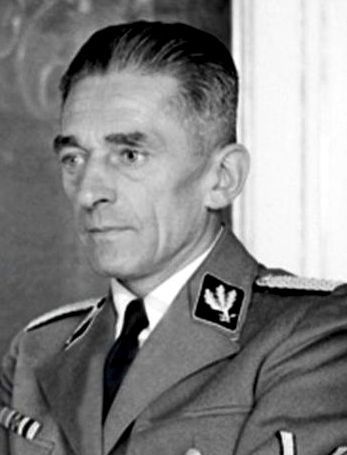On 22 May in the courtyard of the Pankrác prison in Prague, the verdict of the Czechoslovakian Extraordinary People's Court was carried out: Karl Hermann Frank, one of the leaders of the occupation regime in Bohemia and Moravia, who was directly responsible for the death of 4,000 residents of Lidice and Ležákov, was declared a war criminal by the court and hanged. A year before, on the eve of the Prague Uprising, Frank announced over the radio that he would "drown any rebellion in a sea of blood".
The public could enter the prison courtyard from the street; in total, more than 5,000 people came. This hanging was the last public execution in the history of Prague. Frank's death was photographed and filmed for newsreels. Film director Jiří Weiss, who saw the footage in London where he emigrated after the occupation, recalled: “On the screen a crowd of thousands was enthusiastically waving their hands in front of the camera. Several caring fathers lifted their kids onto their shoulders so that they could see the hanging well.
“It looked medieval. In addition, they broke the convicts on the wheel, but the audience liked it so much, and I did not say anything. I began to understand that we, who live abroad, had a different experience and a different view of things than people at home.
“In close-up, when the executioner broke Frank's neck with his hand, I felt really bad, and I lost consciousness."
By a strange coincidence, Frank's death was officially confirmed by a forensic doctor named Navarra, the husband of nurse Maria Navarrova. On 27 May 1942, Navarrova gave first aid to SS Obergruppenführer Reinhard Heydrich, after he was wounded by agents of the National Liberation Committee of Czechoslovakia, Captain Jozef Gabčík and Sergeant Jan Kubiš, during the “Anthropoid“ operation.
Karl Hermann Frank was buried in an unmarked grave.
Source:
Miloš Heyduk, Karel Sýs, Protektorát ve fotografiích, nakl. BVD, s.r.o., Praha, 2006
























